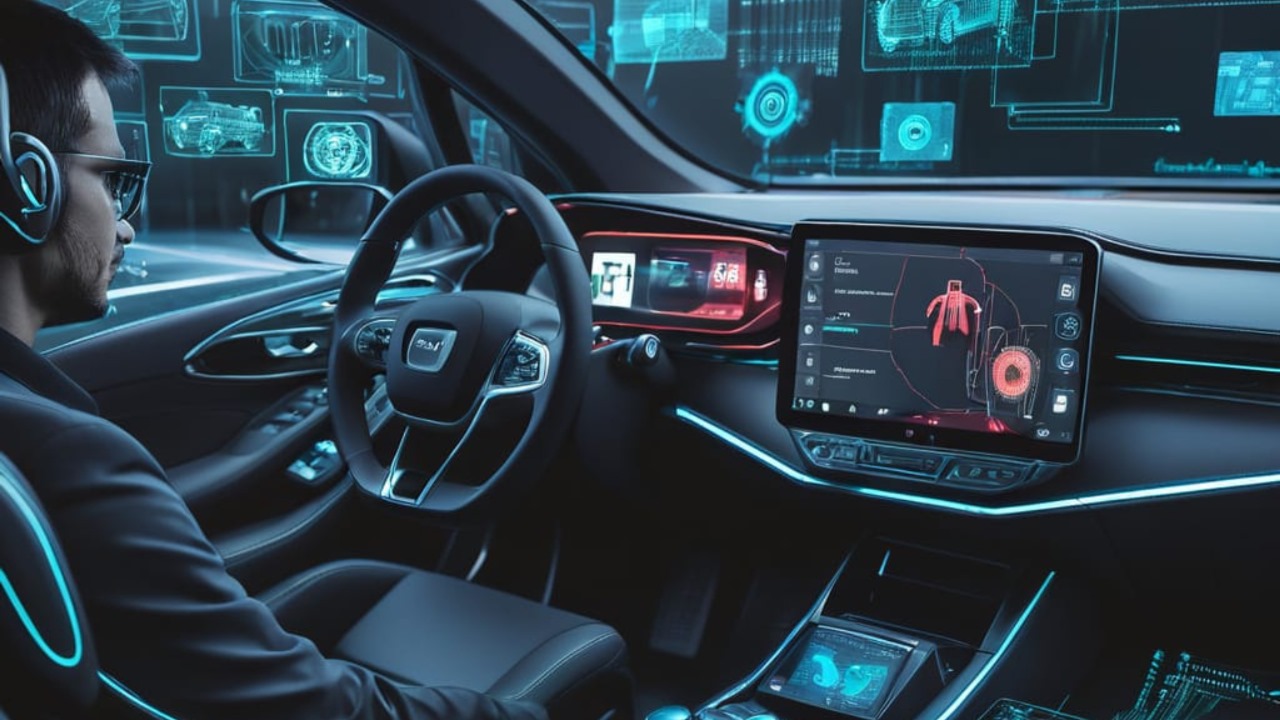With cutting-edge technologies and a rapidly changing digital landscape coming together, the automotive industry is poised for a massive transformation. Software Defined Vehicles (SDVs), a paradigm shift in vehicle design functionality and connectivity are at the forefront of this revolution. Enhanced performance efficiency and improved user experience are becoming more and more attainable as cars transition from mechanical devices to intelligent networked platforms. The intricate problems presented by vehicle cybersecurity and data privacy must however be addressed in tandem with these developments.
We explore the details of SDVs consider the implications for automotive cybersecurity and map out a path for a more secure and safe mobility in the future. The notion of Software Defined Vehicles (SDVs) entails a comprehensive restructuring of automotive architecture enabling automobiles to leverage the capabilities of sophisticated software computing and networking. Manufacturers can introduce new features and services with unprecedented speed and efficiency thanks to SDVs unmatched flexibility scalability and agility which are achieved by decoupling hardware from software.
SDV technology has many potential uses that could be both revolutionary and diverse ranging from personalized user interfaces and immersive in-car entertainment to autonomous driving and predictive maintenance. Smart Driving Vehicles (SDVs) hold great potential to transform the way we view engage with and utilize automobiles as automotive ecosystems develop further. This will usher in a novel era of mobility characterized by creativity ease of use and communication. However, the prospect of cybersecurity threats and vulnerabilities which hang heavy over the automotive industry looms large amid the excitement and promise of SDVs.
Cars are more vulnerable to cyberattacks and malicious exploitation as they become more software-driven and networked. Cybercriminals find the complex web of interconnected systems sensors and communication networks that underpin contemporary cars to be a vast and alluring target eager to take advantage of weaknesses for financial gain espionage or sabotage. The potential ramifications of a successful cyberattack on an SDV are severe posing serious risks to consumer safety security and trust. These risks range from remote hijacking and unauthorized access to vital vehicle functions to data theft and manipulation.

Automakers tech firms and government agencies are stepping up to create and execute strong cybersecurity solutions that are especially suited to the special problems that SDVs present in reaction to these new threats. Stakeholders can strengthen the defenses of SDVs against a wide range of the threats and vulnerabilities by implementing a multi-layered approach to vehicle cybersecurity that includes cryptographic algorithms intrusion detection systems secure software development practices and over-the-air (OTA) update mechanisms. Furthermore in order to promote a culture of collective defense and resilience in the face of changing cyber threats industry participants—including manufacturers suppliers researchers and government agencies must collaborate and share information.
Furthermore, the necessity for thorough data privacy protections grows as cars get more and more connected to outside networks and services. Strong security measures are required to preserve customer privacy and confidentiality in light of the growing number of onboard sensors, cameras and other data-generating devices. These concerns are related to the gathering storing and transmission of sensitive data. Automakers can mitigate the risk of data breaches and unauthorized access and ensure compliance with industry standards and evolving regulatory frameworks by implementing strict data encryption access controls and anonymization techniques.
Furthermore, guaranteeing the security and integrity of these systems becomes crucial as SDVs depend more and more on artificial intelligence (AI) and machine learning algorithms to enable sophisticated features like autonomous driving and intelligent navigation. Manufacturers can reduce the risk of algorithmic bias manipulation and exploitation while also guaranteeing the safety and dependability of autonomous and semi-autonomous vehicle systems by implementing strict security controls and validation procedures into the design and development process.
In summary,
Software Defined Vehicles (SDVs) offer unmatched chances for innovation convenience and connectivity marking a turning point in the development of automotive technology. However there are also a lot of difficulties associated with these opportunities especially when it comes to data privacy and cybersecurity. Stakeholders can contribute to preserving consumer safety security and trust in an increasingly digitalized and connected world by adopting a proactive and cooperative approach to vehicle cybersecurity. Lets stay true to our mission of advancing mobility in a way that is responsible safe and secure for everyone as we traverse the challenging terrain of automotive innovation.

Leave a Reply